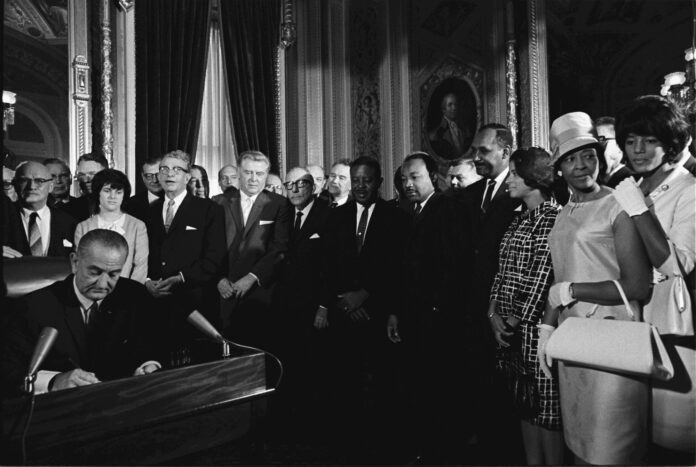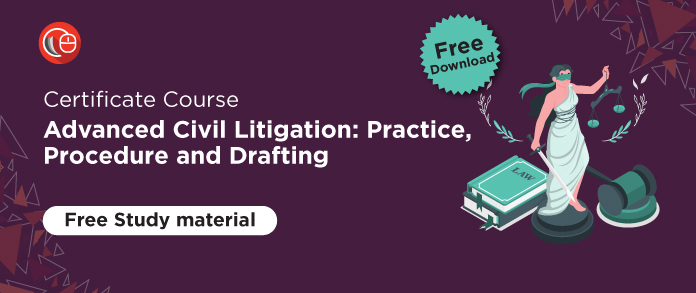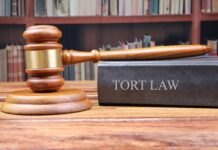This article is written by Kishita Gupta, a graduate of the Unitedworld School of Law, Karnavati University, Gandhinagar. This article will give a brief history of voting rights in the USA along with an overview of the Voting Rights Act of 1965.
It has been published by Rachit Garg.
Introduction
How would you feel if you were denied the right to vote just because you belong to a particular colour, gender, race, caste, etc? Well, the answer is obvious you will feel cheated by the government, which has a responsibility to protect your fundamental rights, the right to vote being one of them. This is how a section of the American population felt before 1965. However, the introduction of the Voting Rights Act, 1965 (hereinafter referred to as ‘The Act of 1965’) came as a centrepiece of the civil rights movement, signed into law by President Lyndon B. The Act codifies and puts into practice the nation’s unwavering guarantee of the 15th Amendment, also giving women the right to vote through the 19th Amendment to the Constitution of the United States of America.
In this article, the author will be discussing the historical background, which is important to understand here first, as the development of voting rights only led to the introduction of the Act. After that, the various important provisions, a brief analysis of the current scene, and various other aspects related to the Act of 1965 will be discussed.
Historical development of voting rights in the USA
In the USA in the 18th century, voting rights were limited to only those white males who held property of their own. Despite their conviction in the merits of democracy, the founders of the United States acknowledged and embraced strict constraints on voting. Election eligibility was initially left up to the states under the U.S. Constitution. Some states also used religious requirements to limit voting to Christian men.
Relevance of the 15th and the 19th amendment
The final Civil War Amendment, the ‘Fifteenth’, was approved at the federal level in 1870. All American citizens are guaranteed the right to vote, regardless of their race, color, or past condition of servitude. The degree of black electoral participation and representation significantly increased once this amendment went into effect and a Republican-controlled Congress took over ‘reconstruction’ with the goal of improving the conditions of the freedmen. After agreeing to additional requirements, including ratification of the Fifteenth Amendment, the final three former Confederate states, Mississippi, Texas, and Virginia, were readmitted in 1870. But in the decades that followed, several states, especially in the South, utilised a variety of obstacles, like poll taxes and literacy tests, to purposefully lower the number of African American men who were eligible to vote.
The Enforcement Act of 1870, which featured criminal penalties for interfering with the right to vote, and the Force Act of 1871, which established federal election control, were subsequently passed by Congress.
As a result, hundreds of thousands, possibly one million, of freshly freed slaves registered to vote in the former Confederate States, where new black citizens occasionally made up the majority of eligible voters. For the first time, black candidates started to win elections for federal, state, and local positions and take on significant roles in their administrations. However, this did not last for long.
The end of Reconstruction, marked by the withdrawal of federal troops after the Hayes-Tilden Compromise of 1877, and the landmark decision of the US Supreme Court, United States v. Cruikshank (1876), limited the application of the Enforcement Act and the Force Act, creating an environment where violence could be used to suppress black voter turnout and fraud could be used to invalidate votes cast in accordance with the law.
In order to restore and solidify white political supremacy, certain states started amending their constitutions and passing a number of laws in the 1890s. These rules that prevented people from voting included poll taxes, literacy assessments, certificates of “good character,” and exclusion for “crimes of moral turpitude.” These initiatives led to the disenfranchisement and expulsion of practically all black citizens from the former Confederate states by 1910. It would take several decades to restore the rights that these strategies had stolen.
At the turn of the 20th century, women could still only cast ballots in a small number of states. With the adoption of the 19th amendment to the U.S. Constitution in 1920, women all around the country finally gained the right to vote after decades of organising and agitation.
Supreme Court’s role in voter rights
After the 1876 case, the Supreme Court seemed to change its role in providing voting rights to the suppressed people and in protecting them as per the Constitutional Amendments. The Supreme Court ruled in Guinn v. United States (1915), that “grandfather provisions” in Oklahoma’s Voter Registration Act of 1910, which made voter registration partially reliant on whether the applicant was descended from individuals enfranchised before the 15th Amendment’s passage, violated that amendment.
Later in 1944, in the case of Smith v. Allwright (1944), the Texas “white primary” was found to have violated the 15th Amendment. Many of the extra restrictions that the Southern states tried to impose in order to restrict black political participation were overturned by federal courts over the course of the next ten years.
Finally, in 1960, as it became clear that black voter registration could not be stopped permanently, some states started to alter their political boundaries and electoral procedures to lessen the impact of black re-enfranchisement. One such attempt, in which the state legislature redrew the limits of Tuskegee, Alabama, to eliminate all but a small number of the city’s black registered voters, was overturned by the Supreme Court in the case of Gomillion v. Lightfoot (1960). It was determined that Alabama had broken the 15th Amendment by doing this.
The Supreme Court overcame its resistance to applying the Constitution to unequal redistricting practices in the early 1960s. Because such “political problems” fall outside the purview of federal courts, the US Supreme Court has previously declined to rule on constitutional objections to legislative apportionment plans. This decision predated 1962. However, the Supreme Court acknowledged in Baker v. Carr (1962) that severely unfairly distributed state legislative districts could seriously undervalue or dilute the voting power of residents of overpopulated districts while excessively valuing the voting power of residents of underpopulated districts. According to the Supreme Court, the Equal Protection Clause (which gives equal rights to every citizen of the US, irrespective of their colour, gender, etc.) of the 14th Amendment allows for a challenge to such malapportionment in federal court.
One-person, one-vote was established by the Supreme Court in later cases such as Reynolds v. Sims (1964), and Wesberry v. Sanders (1964). Correcting this discrepancy resulted in major realignments of political power in several states, since in many states, improperly drawn legislative districts had given sparsely populated rural counties a much bigger percentage of their state’s political power than their state’s population. The Supreme Court suggested, but did not rule on, the possibility that some apportionment methods would unconstitutionally weaken the voting power of racial minorities in Fortson v. Dorsey (1965).
The United States Supreme Court ruled in Harper v. Virginia Board of Elections (1966) that the use of a poll tax at state elections is unconstitutional, overturning its earlier ruling in Breedlove v. Suttles (1937), which endorsed the constitutionality of the same.
Important provisions of the Voting Rights Act of 1965
President Johnson ratified the Voting Rights Act in August 1965. The Act’s text was similar to that of the 15th Amendment. Additionally, it mandated that any modifications to voting procedures in regions of the nation with a history of prejudice be approved in advance by the central government. Since 1975, the Act has been extended by Congress many times.
Section 2 – prohibition of practices to deny the right to vote based on race
Section 2 forbids states and political subdivisions from enforcing election policies and procedures that would limit the right to vote based on a person’s race, color, or language. Redistricting strategies, at-large elections, and voter registration methods are examples of practices that could be modified to have a discriminatory impact. This Section reflected most of the 15th amendment, and unlike various other sections in the Act of 1965, it didn’t have an expiry date. It prohibits racially discriminating election practices and procedures and also allows the Attorney General to initiate legal proceedings if any such activity is found.
In the 1986 ruling of Thornburg v. Gingles, the Supreme Court laid down a three-pronged test for proving minority vote dilution under Section 2. Its key elements were as follows:
- The minority group is big enough and close enough to the center of the image to constitute the majority in a single-member district,
- A politically united minority group; and
- The white majority votes in unison, which typically results in the rejection of the minority’s preferred candidate.
Recently, the Court determined in Bartlett v. Strickland (2009) that a minority group must comprise more than 50% with regard to the geographic compactness outlined in the first component of the Thornburg test. The Court ruled that the minority group’s ability to elect the favoured candidate without making up a majority of the population of voting age, but by joining with other voters, did not pass the test.
Section 3 – the “Bail-in” provision
As noted above, Section 2 gives power to the Attorney General to initiate suit in the case of a violation of the guarantees of the Fourteenth and Fifteenth Amendments. In continuation of that, Section 3 empowers a federal court to order the appointment of federal examiners to guarantee the validity of voting rights in a region where such a suit is initiated. The provision is applicable nationwide. The U.S. Civil Service Commission appoints the examiners to serve, as determined by the court, in the locations and for the durations that are suitable.
Section 4 – the coverage formula
Congress agreed that racial voting discrimination had been more pervasive in some regions of the country when it passed the Voting Rights Act of 1965. The formula to identify which states and regions discriminated against voters based on race or had low voter turnout was laid forth in Section 4. The Act’s Section 4(a) created a methodology to determine those areas and, when necessary, to offer more severe remedies, which are as follows:
- A literacy test as a requirement to register to vote would be suspended for five years. It was last extended in 2006 for another 25 years.
- The second was the requirement that any modification affecting voting made by a covered area be reviewed under Section 5 by the Attorney General or the United States District Court for the District of Columbia.
- The Attorney General’s certification that certain jurisdictions also needed federal examiners to be appointed. Lists of eligible voters would be created and sent by these examiners.
- The Attorney General’s power to send federal observers to jurisdictions that have received certification for federal examiners is the final remedy available under the special provisions.
In Shelby County v. Holder (2013), the Supreme Court ruled that Section 4(b) of the Act’s coverage formula was unconstitutional. As a result, no jurisdictions are any longer subject to the coverage formula used in Section 4(b) or to Sections 4(f)(4) and 5 of the Act.
Section 5 – preclearance of changes to election laws
Because Section 4(b) of the VRA was declared unconstitutional by the U.S. Supreme Court in Shelby County v. Holder, Section 5 is currently ineffective. When it was first passed, Section 5 forbade states and political subdivisions covered by Section 4 from passing any new voting-related “qualification or requirement to vote, or standard, practise, or procedure with respect to voting different from that in force or effect on November 1, 1964.”
The purpose of Section 5 was to prevent modifications to election processes or practises in jurisdictions that were covered until the Attorney General’s administrative evaluation of the new procedures or the filing of a lawsuit before the United States District Court for the District of Columbia finds that the new procedures are free of any discriminatory intent or impact. The purpose of Section 5 was to prevent the implementation of voting reforms in covered areas prior to receiving a favourable ruling.
A covered jurisdiction may comply with Section 5 in one of two ways described in Section 5. The United States District Court for the District of Columbia receives declaratory judgement actions from covered jurisdictions in the first manner specified in the Act. In these situations, a three-judge panel is assembled according to the provisions of Section 2284 of Title 28 of the United States Code, and the Supreme Court will hear if there is any appeal. The United States or the Attorney General is the defendant in these instances, and they are in court being represented by lawyers from the Civil Rights division’s voting section. The US Supreme Court hears appeals of decisions made by the three-judge district courts.
Administrative review is the second strategy for Section 5 compliance. By submitting the voting change to the Civil Rights Division of the Department of Justice, to which the Attorney General has given the responsibility to manage the Section 5 review procedure, a covered jurisdiction might avoid the potentially time-consuming and expensive litigation route. If the Attorney General does not express a disagreement with the modification in writing or if, after 60 days have passed, the Attorney General has not objected to the proposed change, the jurisdiction may proceed with implementation. The Department of Justice has a policy of responding to every submission in writing and detailing the decision it has reached for each proposed vote change.
Section 6 – calling in an examiner
As per Section 6 of the Voting Rights Act of 1965, when 20 or more residents of a political subdivision submit written complaints alleging that they were denied the right to vote due to their race or colour, or whenever such appointment is deemed necessary in the Attorney General’s opinion, federal examiners may be appointed in covered jurisdictions to facilitate voter registration. Section 6 turned out to be a successful mechanism in preventing the problems of reluctant registrars.
Section 7 – approval by the examiner
Subsequently, as per Section 7, the examiners add the names of applicants whose voting eligibility has been determined to the voter registration list. The examiners are supposed to meet with people concerning their voting rights at the places that are set up by the Civil Service Commission. The applicant can be added immediately to the list of eligible voters if the examiner decides that they match the qualifications for voting. The states are then regularly provided with a list of these federally verified voters, along with copies that are also sent to the state and federal attorneys general. Anyone on the list is eligible to vote, but they must be added to it 45 days prior to the election. An applicant’s name can only be struck down from the list for one of the following reasons:
- If they are challenged by the procedure laid down under Section 9 of the Act, or
- If due to the examination by another examiner, they’ve lost their voting eligibility after the fact.
Section 8 – keeping an eye
In every political subdivision where an examiner has been designated to watch “whether persons who are entitled to vote are being permitted to vote” and “whether their ballots are being correctly tallied,” Section 8 permits the appointment of election observers.
Section 9 – challenge
This Section of the Voting Rights Act states that if there is any challenge to a name on the examiner’s list, it has to be heard by an officer appointed by the CSC, as per the rules prescribed by the Commission’s regulation. The challenge will only be heard if the following conditions are fulfilled:
- The challenge is made within ten days of the list’s posting,
- At least two people with personal knowledge of the challenge testify through affidavits against the challenged party, and
- A copy of the challenge and its testimony is served to the challenged person.
The challenge will be determined within 15 days of filing. Then, if anyone wants to file an appeal, it may be filed within fifteen days. However, unless there is a scenario where the decision of the hearing officer is totally and flagrantly wrong, it cannot be reversed.
Section 10 – no poll tax
Through Section 10, Congress found that a poll tax not only prevents the poor from voting but also often unfairly targets people based on race or color. Thus, it was found that there wasn’t any kind of relevance for checking voting qualifications, resulting in no poll taxes. As a result, the Attorney General has the power to repeal them and pursue legal action against states that still have them in place. The District Courts handling those actions will be presided over by a panel of three judges and ought to be completed as soon as practical. No one can be denied the right to vote if they pay the poll tax to the relevant state or local authority forty-five days before the election, whether or not the poll tax was due at that point. This is true even if the courts (somehow) rule that the poll tax is unconstitutional, as noted in Harper v. Virginia Board of Elections (1966). Examiners may collect the payments and forward them on the applicant’s behalf to the state.
Section 11 – penalties
Section 11 of the Voting Rights Act of 1965 states the following:
- Nobody as per this Section can prevent people who are protected by this Act from voting.
- Nobody who is acting lawfully shall intimidate, threaten, coerce, or attempt to intimidate, threaten, coerce any person, to vote, to urge or aid any person to vote.
- Anyone found guilty of voting fraud faces a maximum fine of $10,000 and a maximum sentence of five years in prison. However, this decision only applies to federal elections, such as those for presidents, senators, and representatives.
- Fraudulent examiners or hearing officers receive the same maximum $10,000 fine and five-year term as dishonest voters.
Section 12 – punishments
- Those who attempt to deny others the rights established by this law can be fined up to $5,000 or sentenced to up to five years in prison.
- Physically or digitally altering any official record of a vote is punishable by a $5,000 maximum fine or five years in prison.
- The Attorney General may take action on behalf of the United States to compel those who are allowed to vote under this law to do so if someone is engaging in or about to participate in behavior that violates the Voting Rights Act.
- If an examiner is onsite and someone approaches them within two days of the polls closing on election day, claiming they were stopped from voting as a result of any of the aforementioned circumstances, and the examiner confirms that this is genuine, the examiner will promptly notify the AG.
- The AG may then ask the District Court to grant that person the right to vote and have their ballot counted. The court must submit this application right away.
- The district court must initiate the matter regardless of whether the plaintiff has used all available legal options since it has jurisdiction over it.
Impact of the Voting Rights Act of 1965
The Voting Rights Act gave the federal government the power to eliminate state-level policies, such as poll fees, literacy tests, and open violence against black voters, which made it very difficult or even impossible for African Americans to cast ballots.
In particular, in counties that were designated as being “covered” by the statute, the 1965 Voting Rights Act (VRA) substantially enlarged the franchise while defending the voting rights of minority voters. Black arrest rates decreased in counties that were covered by the law, had a sizable number of newly enrolled black voters, and had top law enforcement officers elected after the VRA’s adoption.
According to the US Commission for Civil Rights’ report, the percentage of black voters registered in Mississippi jumped from ju
st 6.7 percent in 1965 to 59.8 percent in 1967. This constituted a significant political shift for a state with a historically high percentage of black residents (about 40%), a move that most of the time’s predominately white leadership feared but had to embrace in light of the Voting Rights Act.
Thanks to the Voting Rights Act of 1965, African Americans in Southern states were no longer denied the right to vote. By the end of the decade, 66 percent of black voters in the South had been registered, up from 43 percent in 1964. This meant that there were more than a million additional African Americans who could now exercise their right to vote. By the middle of the 1980s, there were more black people serving in public office in the South than in the entire country. Even while the percentage of black people holding public office was still far behind the percentage of black people in the population, the gap outside the South was roughly four times larger than inside it in 2001.
A report from Vox revealed that, over the following several decades, the disparity between black-white voters decreased in Southern states by comparing the census data from 1988 and 2012. Due to a decline in white voter registration and an increase in black voter registration, Mississippi’s census statistics from 1988 revealed a 6.3-point disparity. In Mississippi, the disparity was even reversed in 2012: 90.2% of individuals of voting age who are black registered to vote, compared to 82.4% of non-Hispanic white voters.
According to a report, the Voting Rights Act has benefited the residents of Jefferson Parish, Louisiana, where Section 5 has applied since the Voting Rights Act was passed in 1965. In Jefferson Parish, 63 percent of black people were registered to vote in 1990 thanks to Section 6. Before 1965, it was just impossible to do that.
For the first time in American history, black citizens turned out to vote at a higher national percentage than white citizens in 2012. But by election day 2012, 19 states had enacted voting or registration restrictions that would reduce minority turnout, five of which were still subject to the preclearance requirement from 1965.
However, there have been instances of voting-related fraud as well. A federal judge determined in October 2014 that 600,000 registered Texas voters lacked valid identification. According to the testimony, registered voters who are African American and Hispanic are two to four times more likely to be without a photo ID than registered voters who are white. Data from North Carolina showed that African Americans used same-day registration and early voting at considerably higher rates than whites.
Recently, in February 2022, a ruling by the Supreme Court in Merrill v. Milligan (2022) upheld a Congressional district map for Alabama that a lower court had deemed diminished the influence of black voters, indicating that the court was about to adopt a more sceptical attitude toward challenges to voting districts based on charges of racial discrimination.
The usage of ballot drop boxes, which significantly grew across the nation during the COVID-19 pandemic, was deemed unconstitutional by a divided Wisconsin Supreme Court on July 8, 2022, in the case of Wisconsin Legislature v. Wisconsin Elections Commission (2022). In a 4-3 decision, the Court’s conservative majority also stated that voters cannot have other individuals mail in their completed ballots on their behalf to the clerk’s office, but it declined to rule on the issue.
A brief analysis of the current scenario
With ethnic and racial minority populations in the United States rising, there is a growing population of voices that remain unaccounted for. Though current legislation has been implemented to ensure fair and impartial voting access, there is too much leeway given to state governments in the voting system’s execution. As a result, restrictions in the election system have resulted in systematic discrimination toward minority populations, making them ineligible to vote.
In many formerly covered areas, the reaction to Shelby was prompt and expected. For instance, lawmakers raced to enact a severe voter ID requirement in North Carolina. The statute allowed “just those sorts of photo ID predominantly held by whites and excluded those disproportionately held by African Americans,” according to the state NAACP, which filed suit against the ID requirement. Only until a federal judge decided that North Carolina attempted to “target African Americans with almost surgical accuracy,” as the legislation threatened to do, was it repealed. But North Carolina wasn’t the only state. With their newfound freedoms, several formerly covered areas have implemented stringent voter ID laws, shut down polling booths, and restricted early voting hours. For instance, tough voter ID laws were passed in North Dakota with Native American voters in mind.
During the Jim Crow era, one of the most effective methods for preventing black Americans from voting was felony disenfranchisement. Despite the VRA’s many successes, this discriminatory practise has been permitted to endure and grow throughout the nation for many years. Notably, the war on drugs singled out individuals of colour for arrest and imprisonment, amplifying the national implications of felony disenfranchisement. Citizens must be able to vote and take part completely in the political process in order for democracy to function, including those who have made mistakes in the past, paid their debt to society, and are now leading productive lives. However, 6.1 million Americans, the majority of whom are people of colour, were denied the right to vote in the 2016 presidential election because they had a felony history.
The Supreme Court has recently engaged in a form of bait-and-switch behavior in various areas of voting rights law. When the Voting Rights Act’s primary anti-discrimination provision was gutted by a majority of the court in the Shelby judgement, including Roberts, Alito, and Thomas, it was pointed out that Section 2 of the Act’s other provisions may still be used by litigants. But lately, the courts have also been gradually weakening Section 2, making it more difficult to challenge legislation covered by it and intervening to overturn lower courts that had cited it to invalidate discriminatory maps. When viewed collectively, the decisions demonstrate how the Supreme Court is gradually undermining rules that are meant to shield Americans from voting discrimination.
“Under Siege: The Plot to Destroy Democracy,” the civil rights organization’s annual State of Black America report, was issued recently. The research revealed, among other things, the social and economic standing of black Americans, their attitudes toward social justice concerns, and the different strategies used to impede their ability to cast votes. The authors of the report claim that partisan politicians in state legislatures across the nation have drafted bills and passed laws making it harder for black Americans to vote, and they see no signs of the effort slowing down. They cite a record number of voters from communities of color using mail-in ballots and early voting. According to the report, 34 pieces of legislation enacted in 19 states in 2021 made it more challenging for black people to cast ballots by restricting the number of polling places available, making mail-in voting more challenging, and enforcing severe signature requirements. The analysis also finds that 18 states carried over at least 152 restrictive bills from the previous legislative session for the 2022 elections.
In 2019, HR 4, also known as the Voting Rights Advancement Act, was presented with the aim of amending the provisions of the VRA that were eliminated as a result of the Shelby County ruling in 2013. HR 4 was again presented in 2021, popularly known as the John R. Lewis Voting Rights Advancement Act.
Conclusion
The majority of legal discrimination against African Americans was eliminated by the Voting Rights Acts, but the consequences of slavery and Jim Crow did not immediately vanish. The Voting Rights Act was necessary, but it is insufficient to address white supremacy and the oppression of people of color, as evidenced by the current demonstrations against police brutality and the disregard for Black lives, the persistence of extreme economic and racial segregation, and the tenacity of separate and unequal schools.
Any and all felony disenfranchisement, tight voter ID, modern poll tax, and discriminatory voter purge practices should be immediately repealed by state legislators. Additionally, they should enact new legislation to stop pointless poll closings and guarantee that everyone in the United States can vote, regardless of their level of English ability. These processes, while not perfect or exhaustive, do make it possible for all Americans, regardless of their race, color, or creed, to fully participate in American democracy.
Frequently Asked Questions (FAQs)
Does the US Constitution mention anything about voting rights?
Yes, the US Constitution under Section 1 mentions that the United States or any state may not restrict or deny an American citizen’s ability to vote because of their age if they are eighteen years of age or older.
When were Native Americans granted voting rights?
Native Americans born in the U.S. were granted full citizenship within the country according to the Snyder Act of 1924. Although the Fifteenth Amendment, established in 1870, gave all residents of the United States the right to vote, regardless of race, Native Americans were not able to take advantage of these rights until the Snyder Act.
Which constitutional amendment gives voting rights to US citizens?
The 15th Amendment of the Constitution gives the citizens of the United States the right to cast their vote.
References
- Voting Rights Act (1965) | National Archives.
- The Civil Rights Act of 1964 and the Voting Rights Act of 1965 (article) | Khan Academy
- On this day, the Voting Rights Act of 1965 is signed | The National Constitution Center
- Voting Rights: A Short History
- History of the US Voting Rights Act
- The Voting Rights Act of 1965: Background and Overview
- The Voting Rights Act of 1965 at 50: How It Changed the World | Time
- How the Voting Rights Act transformed black voting rights in the South, in one chart – Vox
- The Effects of the Voting Rights Act: A Case Study
Students of Lawsikho courses regularly produce writing assignments and work on practical exercises as a part of their coursework and develop themselves in real-life practical skills.
LawSikho has created a telegram group for exchanging legal knowledge, referrals, and various opportunities. You can click on this link and join:
Follow us on Instagram and subscribe to our YouTube channel for more amazing legal content.









